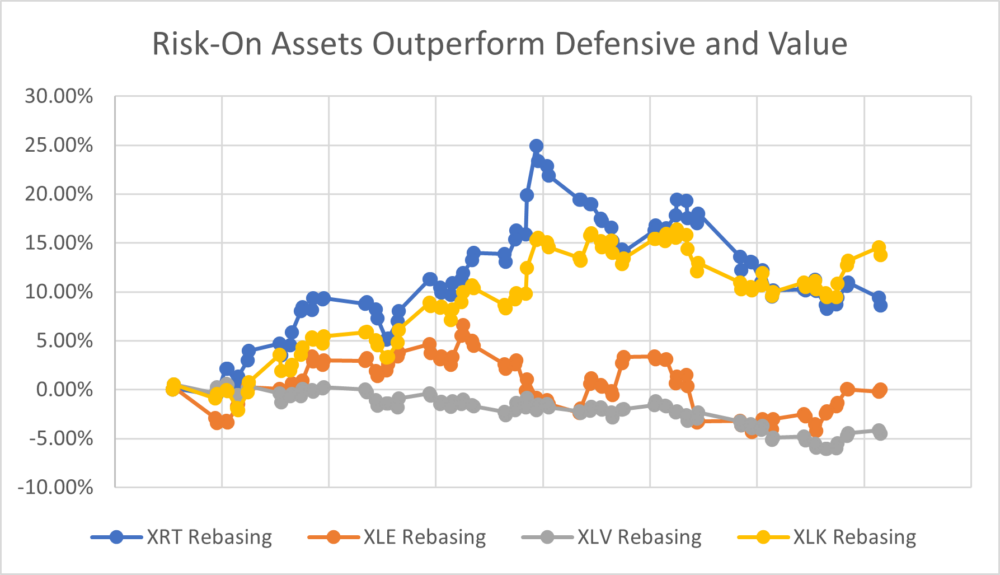Author: Tim Sharp
Researcher: Jack Williams
Published: April 19, 2023
Gold, the precious metal often viewed as a hedge against uncertainty, war, and inflation, has been in the spotlight as it approaches its all-time highs once again. After hitting a peak of 2074.88 USD in August 2020 amidst the breakout of the Coronavirus pandemic, investors are now speculating whether there are further gains in store for gold or if the metal has reached its peak for now. In this week’s chart of the week, we will examine the historical trends and recent developments in gold’s performance, including its relationship with silver and the mining stocks for both metals and how they interact with each other.

Historically, gold has been considered a seriously defensive asset by investors, coining it’s ‘safe haven’ image amidst the inflation-wracked 1970s, where gold emerged as the best performing asset class, solidifying its reputation as a hedge against inflation. However, in recent years, gold’s defensive qualities have been called into question by the investor community as to whether gold still serves as an effective hedge, particularly considering its muted response to certain catalysts, such as the early days of the Russia/Ukraine invasion.
In recent months, gold has once again outperformed, fuelled by a confluence of factors such as the reopening of the Chinese economy, banking sector uncertainties, and investors seeking a hedge to equity markets as prices decline across sectors. These factors have contributed to the upward momentum in gold prices recently, especially since the turn of the year. Notably, while gold has historically outperformed silver in terms of raw price over the long term, there has been an interesting trend reversal when it comes to mining stocks for both metals.
While physical gold has outperformed physical silver, Gold miners have historically lagged behind silver miners in terms of equity prices, but in recent months, this trend has been shifting. The spread between gold and silver miners has been narrowing, with both gold and silver miners moving more in tandem with each other than they previously traded. This suggests a potential changing dynamic in the precious metals mining sector, which could warrant further analysis.

Year to date, gold has returned 9.79% to investors holding the commodity, while silver has returned 2.4% in the same comparable period. However, when it comes to mining stocks, gold miners, as tracked via the VanEck Junior Gold Miners ETF, have returned 6.07%, compared to the 8.28% return from silver miners. This indicates that silver miners have been outperforming gold miners in recent months, which is a noteworthy development to consider.

Considering these trends and recent developments, it is important to analyse the factors driving gold’s performance and its potential for further gains. While gold has historically been seen as a hedge against inflation, geopolitical tensions, and economic uncertainties, its effectiveness as a hedge may be influenced by various factors, including changes in market dynamics, investor sentiment, and global economic conditions.
One key factor that has influenced gold’s performance in recent months is the reopening of China’s economy. China, one of the world’s largest consumers of gold, has been experiencing a rebound in economic activity following the containment of the COVID-19 pandemic and the countries brutal Zero-covid policy, which has contributed to the upward momentum on Gold since the back end of 2022 and start of ‘23.
Another catalyst driving gold’s performance is the recent banking sector uncertainties following the downfall of Silicon Valley Bank and the merger between Credit Suisse and UBS. The banking sector has been facing challenges, including concerns about rising interest rates, potential inflationary pressures, and regulatory changes. These uncertainties have prompted investors to seek safe haven assets, including gold, as a hedge against potential risks in the banking sector.
Across the winder banking sector, opinions are divided as to how gold will perform for the remainder of the year, with some houses predicting a fall, some further rises to break above all time high and others expecting the metal to remain flat on the year. Listed below are some recent Gold forecasts issued by prominent banks.
| Gold Price Forecasts Per Institution | |
| Société Générale | $1550 Year End Target 2023 |
| Fitch | $1600 Year End Target 2023 |
| Reuters | $1750 Year End Target |
| Commerz Bank | $1950 Year End Target |
| J.P. Morgan | $1860 Year End Target |
| Wells Fargo | $1900-$2000 Year End Target |
Sources:
https://www.ytdreturn.com/gold/
Charts: RefinitivData, Van Eck, GlobalX














































